April 10
2016 April 10
Just a gentle reminder: It is helpful, when reporting an invertebrate, to give the species, where it was seen, and the date. (Not “yesterday”, or “this evening” – but the date!) If you don’t know the species, send a photograph, if you can, and we’ll do our best. But an unidentified species without a photograph is a bit hard to post! And please also remember that, when sending a photograph, it is a HUGE, HUGE help if you would send the photograph as an attachment rather than in the body of the message! Thanks to all.
Ron Flower writes: Today, Sunday April 10th [thank you! – Jeremy], at Prospect Lake power lines I saw numerous Western Spring Azures and Sara Orangetips. The highlight was a Two-banded Grizzled Skipper (also called “checkered” skipper – though on this site we are using the word “grizzled” for all Pyrgus skippers and “chequered” for Carterocephalus skippers, rather than mixing them haphazardly. Jeremy]. The skipper was on the power line trail opposite from where the Yellow-breasted Chat was a few years ago down in a deep ravine area.
April 9
2016 April 9
Rebecca Reader-Lee writes: Yesterday (April 8), I found this moth at our house (North Highlands). I’m sure it’s not unusual as I see them often. [Jeremy Tatum responds: Well, it’s Egira rubrica, and it’s certainly not one I see very often! A nice one to get!]
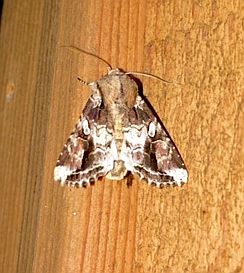
 Egira rubrica (Lep.: Noctuidae)
Egira rubrica (Lep.: Noctuidae) Rebecca Reader-Lee
Aziza Cooper writes: Seen today, April 9, a Mourning Cloak perched on a rock across the lawn from the Swan Lake Nature House. Bill Savale and Jeremy Tatum also report single Mourning Cloaks today, from Mount Tolmie and from Spectacle Lake, as well as a Moss’s Elfin at Spectacle Lake.
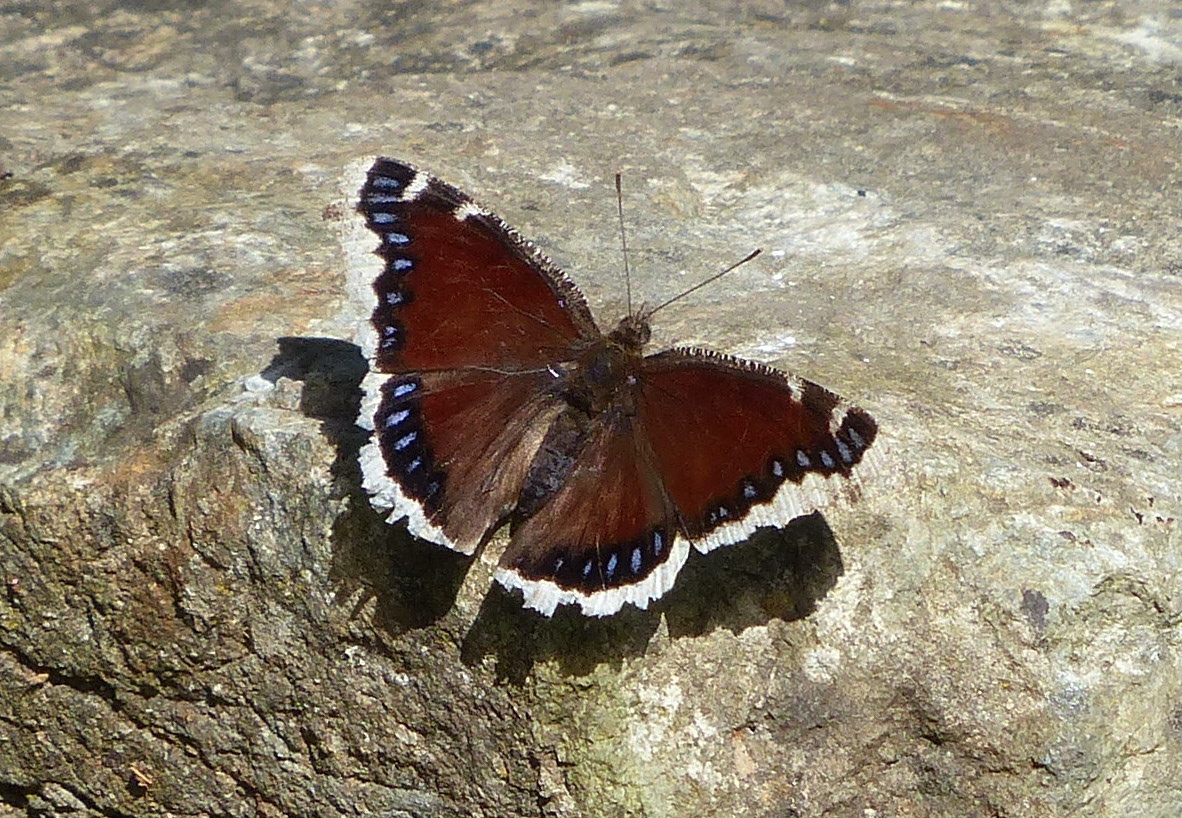
 Mourning Cloak Nymphalis antiopa (Lep.: Noctuidae) Aziza Cooper
Mourning Cloak Nymphalis antiopa (Lep.: Noctuidae) Aziza Cooper
April 8
2016 April 8
Thomas Barbin sends a remarkable photograph of a nomad bee (one of several groups of cleptoparasitic bees also known as cuckoo bees), from the Highlands District yesterday. Cleptoparasites lay their eggs in the nests of other species of bee or wasp, and often resemble their hosts closely.

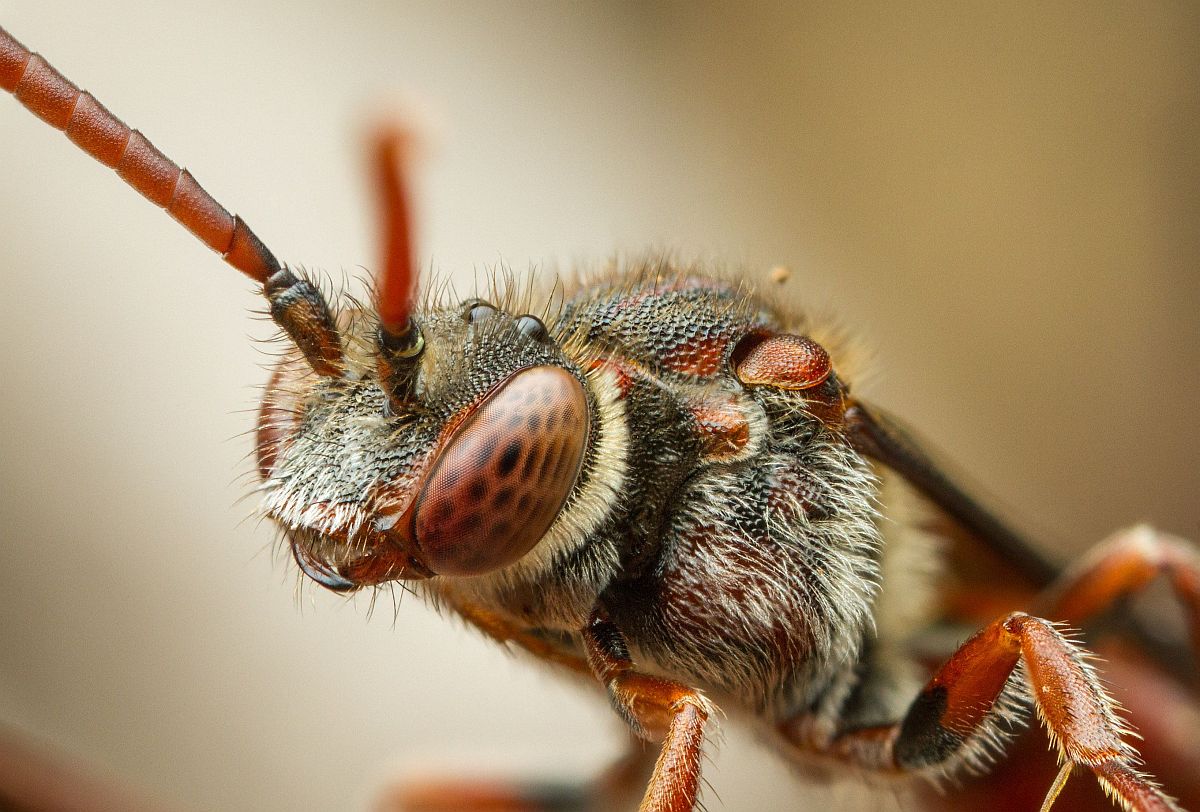
Nomad bee Nomada sp. (Hym.: Apidae – Nomadinae) Thomas Barbin
Gordon Hart writes from Highlands District: Today we had five butterfly species in the yard: a Cabbage White, 2 Western Spring Azures, a Mourning Cloak, a Moss’s Elfin and two commas, Green Commas, I think. [Agreed! Jeremy] I am attaching a photo of the elfin since it was so colourful . The FW seemed almost blue-grey. The commas who kept skirmishing over a patch of brambles looked like Green Commas, although I notice the one I sent from April 2 has two small horizontal white bars between two vertical black bars on the FW. Today’s subjects don’t have the white bars.
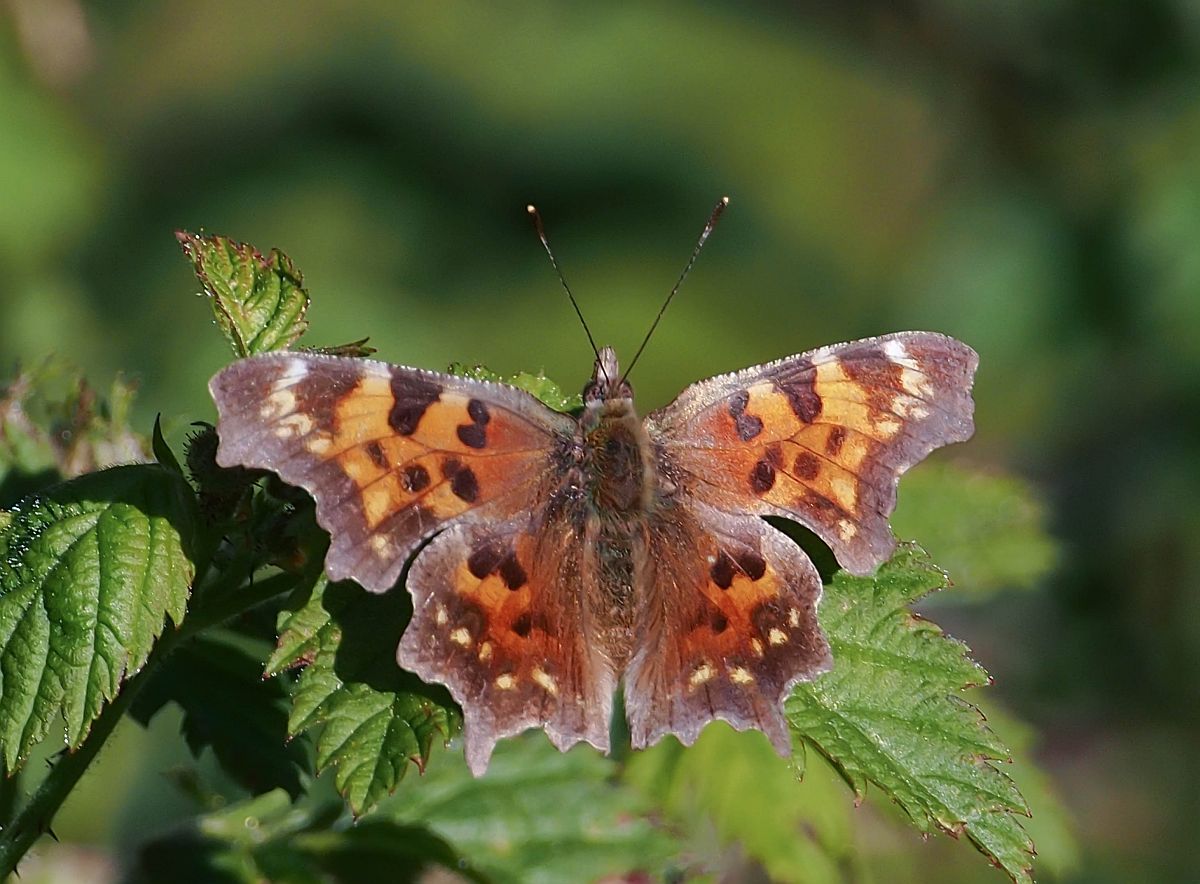
 Green Comma Polygonia faunus (Lep.: Nymphalidae) Gordon Hart
Green Comma Polygonia faunus (Lep.: Nymphalidae) Gordon Hart
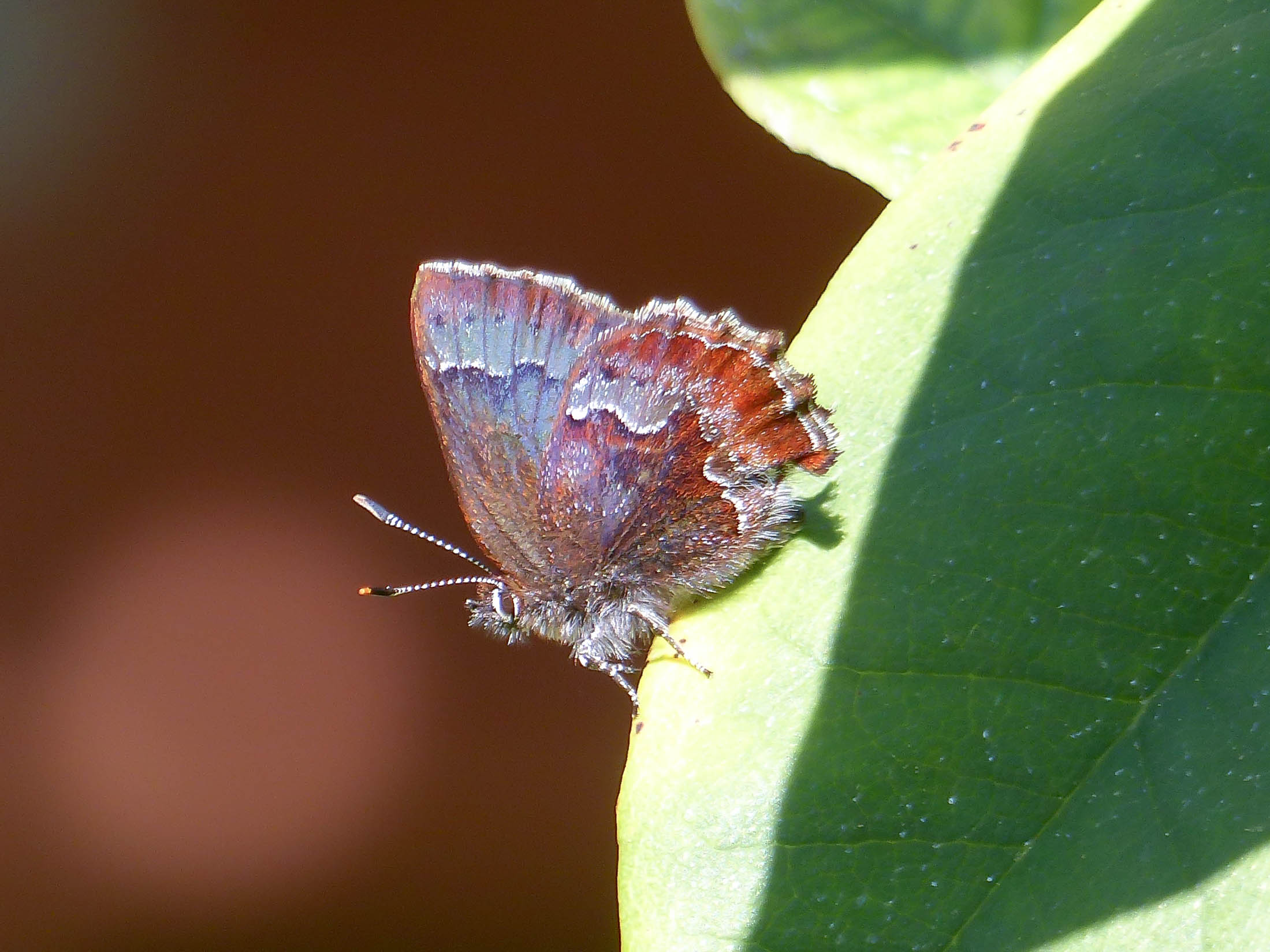
 Moss’s Elfin Incisalia mossii (Lep.: Lycaenidae) Gordon Hart
Moss’s Elfin Incisalia mossii (Lep.: Lycaenidae) Gordon Hart
Val George writes: Mount Tolmie this afternoon, April 7: One each of California Tortoiseshell, Red Admiral, Mourning Cloak.
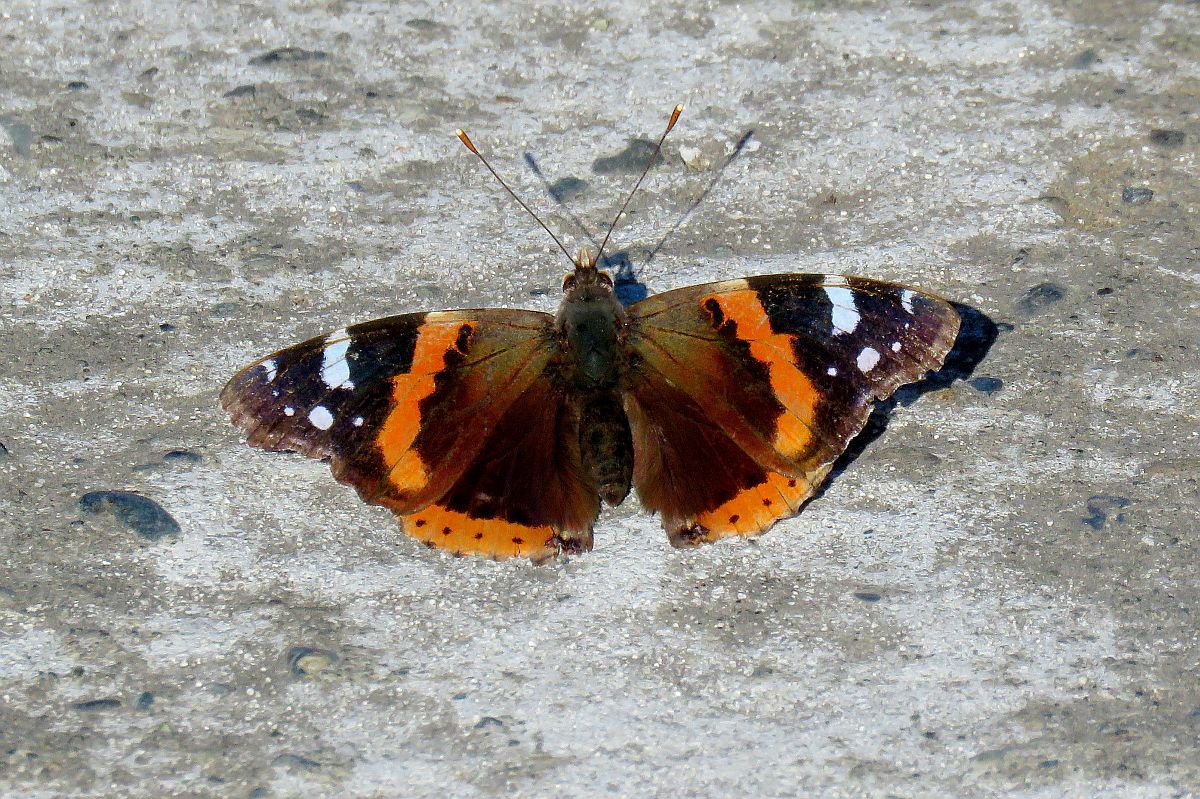
 Red Admiral Vanessa atalanta (Lep.: Nymphalidae) Val George
Red Admiral Vanessa atalanta (Lep.: Nymphalidae) Val George
Annie Pang sends a picture of a sawfly, probably Trichiosoma triangulum, from Victoria, April 6. As with her recent picture of the moth Mesoleuca gratulata, she appears to have caught it in the act of ovipositing.
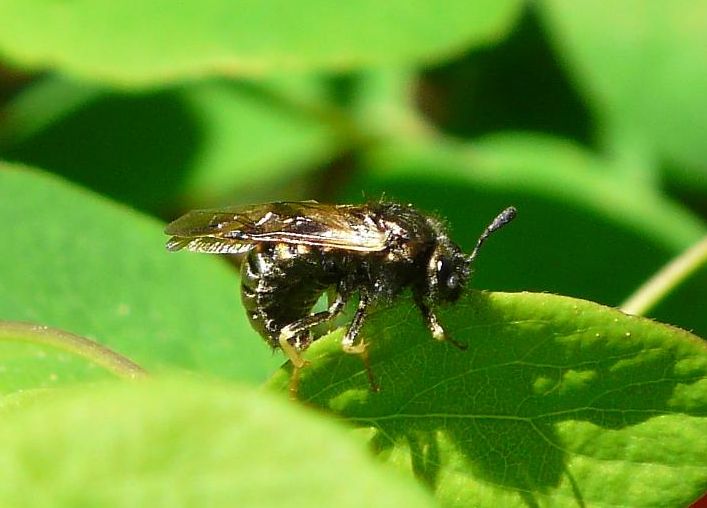
Sawfly, probably Trichiosoma triangulum (Hym.: Cimbicidae) Annie Pang
Mike Yip writes from Nanoose Bay: First-of-year last week 2 Sara Orangetips and 1 Western Brown Elfin. Today first-of-year 5 Spring Azures & 2 Western Pine Elfins.
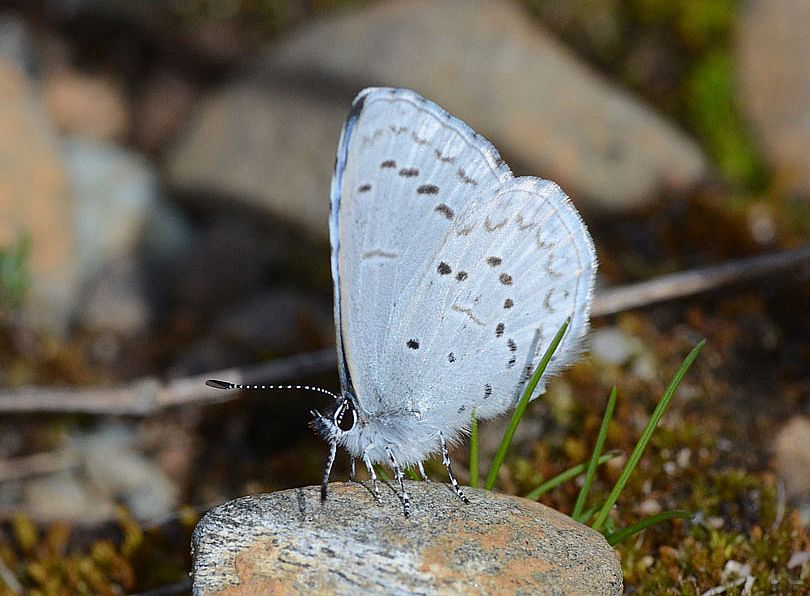
 Western Spring Azure Celastrina echo (Lep.: Lycaenidae) Mike Yip
Western Spring Azure Celastrina echo (Lep.: Lycaenidae) Mike Yip
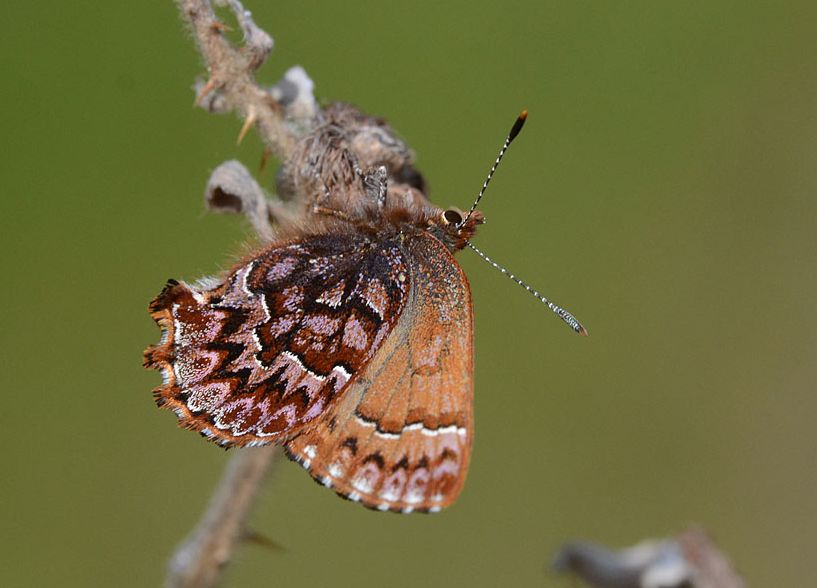
Western Pine Elfin Incisalia eryphon (Lep.: Lycaenidae) Mike Yip

April 7
2016 April 7
Jeremy Tatum writes: Thanks to Rob Bennett for identifying the spider which I photographed at my Saanich apartment this morning, April 7.
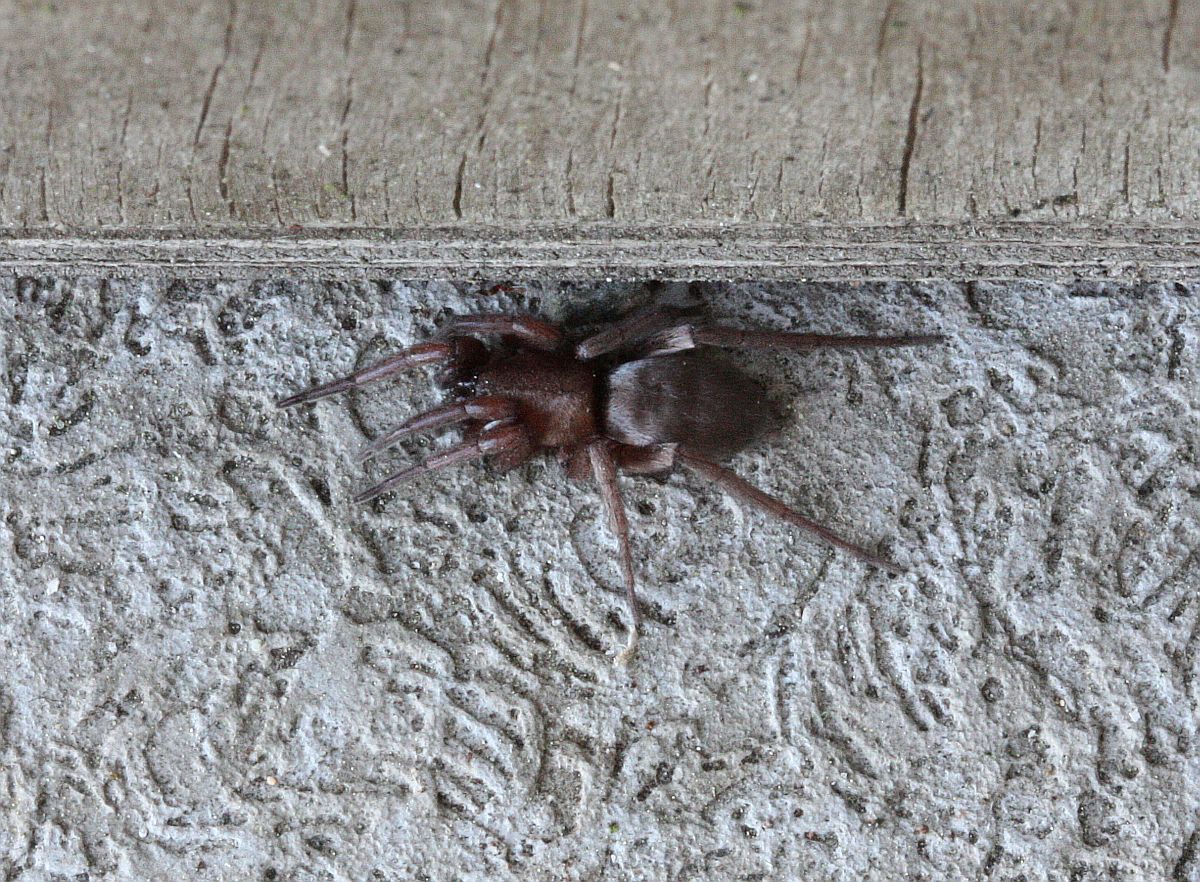
Scotophaeus blackwalli (Ara.: Gnaphosidae) Jeremy Tatum
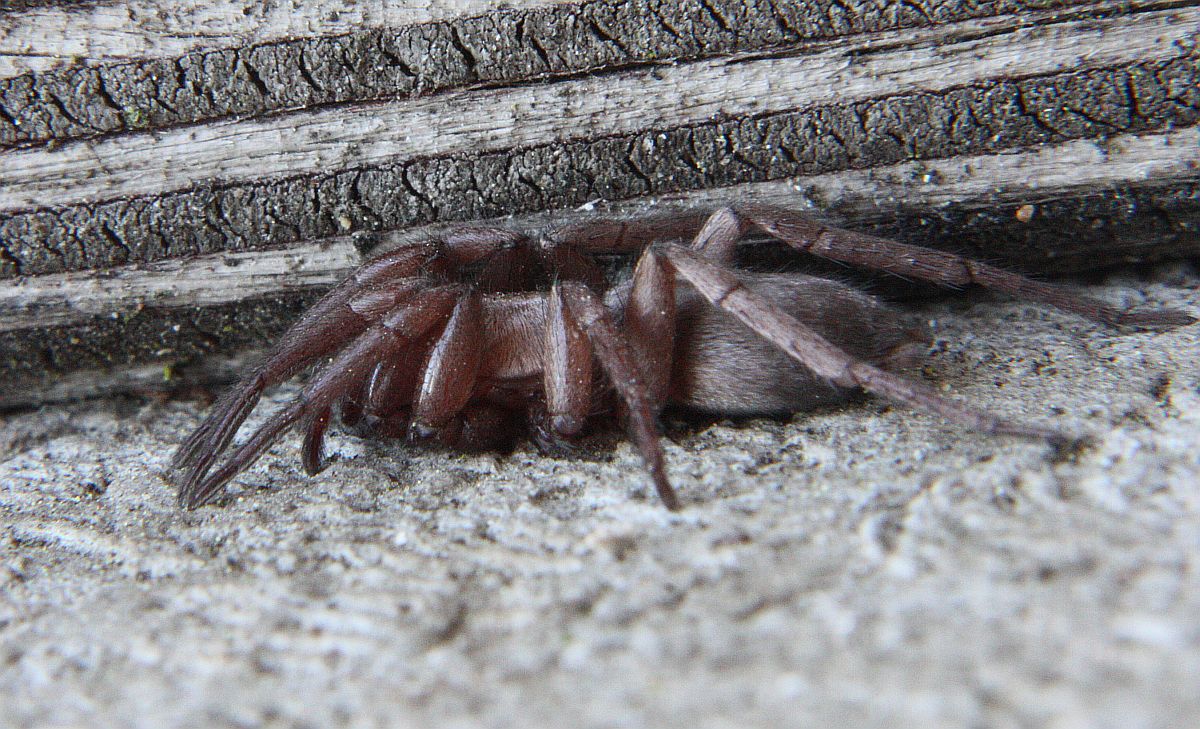
 Scotophaeus blackwalli (Ara.: Gnaphosidae) Jeremy Tatum
Scotophaeus blackwalli (Ara.: Gnaphosidae) Jeremy Tatum
Jeremy continues: There were also a couple of moths on the walls of my apartment building. The immature stages of these moths are of some interest – Hypena decorata because the caterpillar has only three pairs of mid-abdominal prolegs; Cyclophora dataria because the pupa is very similar to that of the Cabbage White butterfly – one of my favorite examples of convergent evolution of two unrelated insects.
I had originally labelled the Hypena moth as Hypena californica. I am greatly indebted to Jeremy Gatten for pointing out that the two white dots near the apex shows that the moth is, in fact, H. decorata.
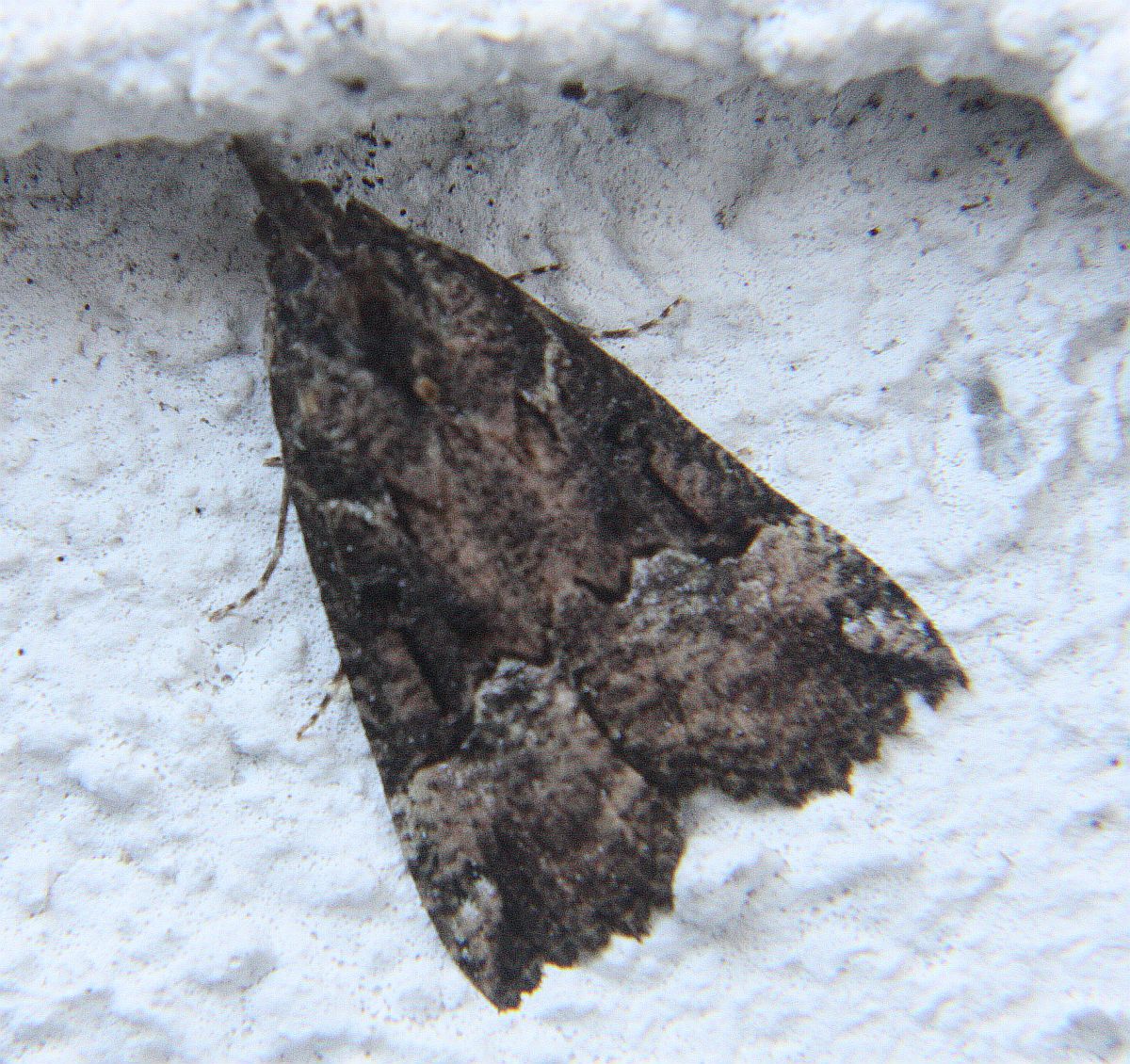
Hypena decorata (Lep.: Erebidae – Hypeninae) Jeremy Tatum
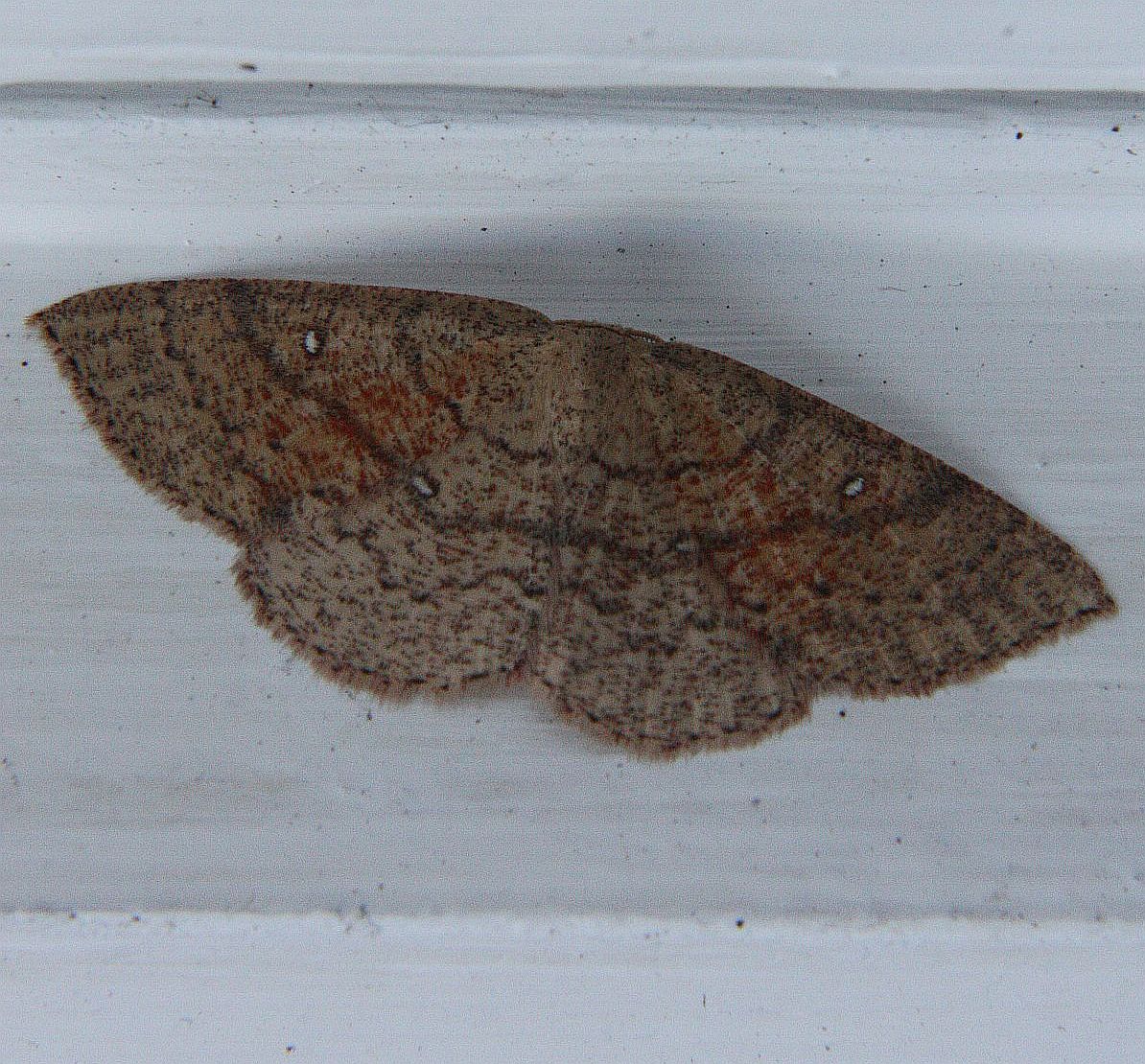

Cyclophora dataria (Lep.: Geometridae) Jeremy Tatum
Devon Parker reports two blue butterflies, presumably Western Spring Azures, on April 6. One at Flanagan Place, and one at the intersection of Glanford Street and Mackenzie Avenue.
